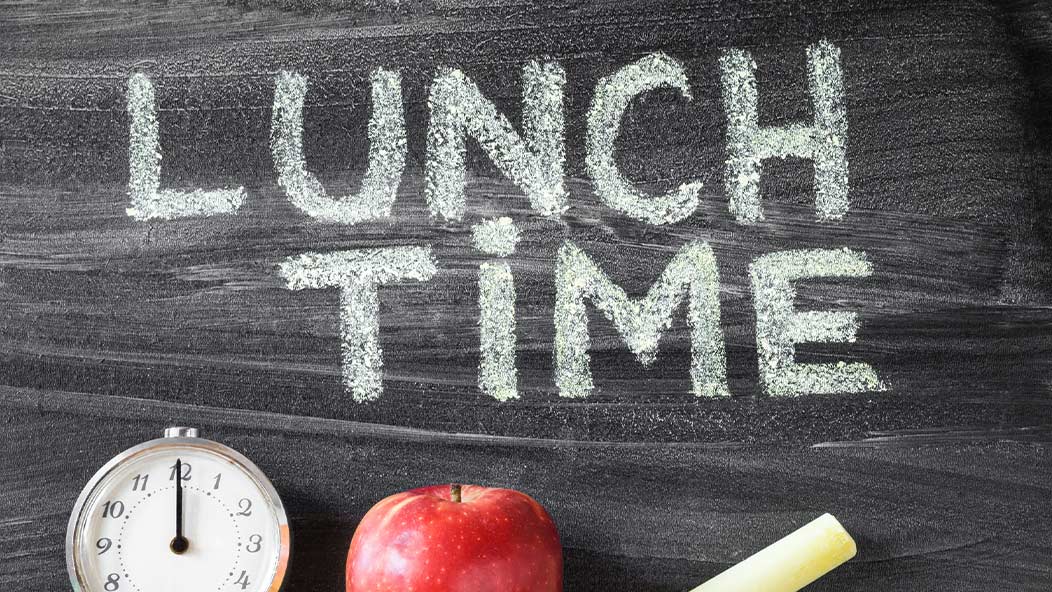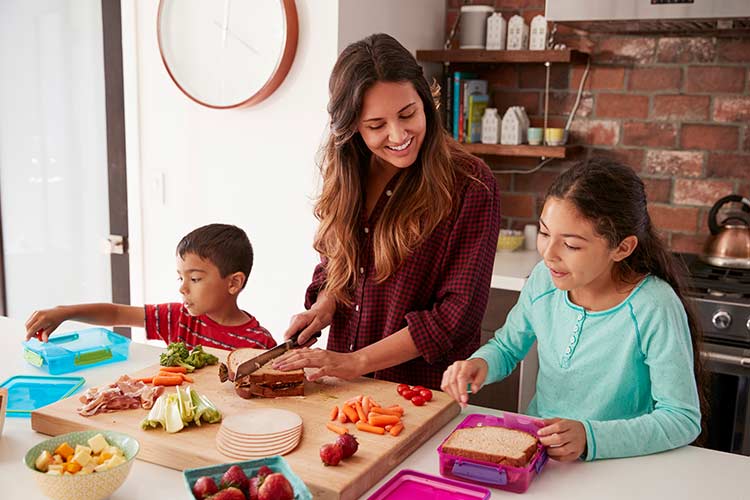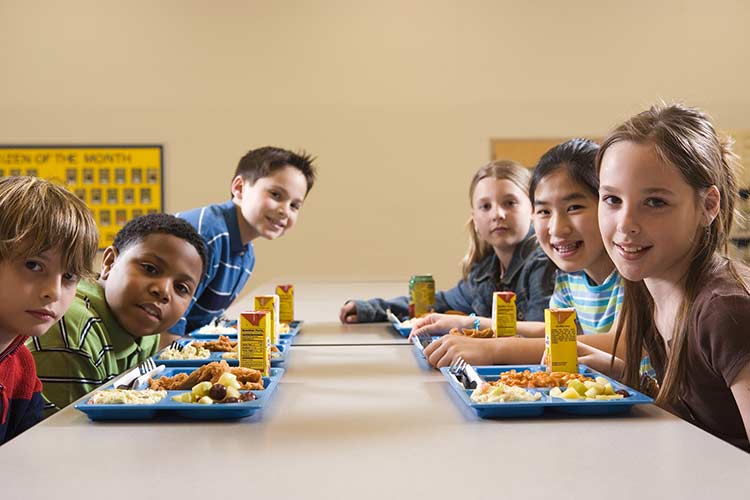Join Our eNewsletter!
Subscribe to our monthly newsletter to receive encouraging advice to help you lead a healthy lifestyle.

How To Help Kids Eat Healthier Meals at School
Getting kids to eat healthy foods isn’t always easy, especially when they’re at school and you can’t be there to help them make good choices. How many times has your child come home from school with a full lunchbox and nothing eaten but dessert? Or you’ve logged into their school lunch account and found they only bought chips and soda for lunch the entire week? You’re not alone. But there are ways to help even the pickiest eaters choose healthy lunch options and actually enjoy eating them!
How To Pack a Healthy Lunch They’ll Love
Packing your child’s lunch is arguably the best way to make sure they’re getting a well-balanced meal. Although school lunch programs are typically stacked with nutritional options, you can’t always be sure your child will select them. Packing a lunch for them – and with them – gives you both a bit more control.

Here are four tips for packing a lunch your child will look forward to eating:
- Plan lunches together. Involve your child at every stage of the process, including planning lunches for the week and grocery shopping. Together, you can create a list of healthy foods your child likes and then have them choose from the list each week to plan meals. They’ll be much more likely to eat a lunch they had a hand in planning and making.
- Make smart switches. If your child has gotten used to eating less healthy foods, you can try substituting healthier alternatives in their lunches. For example, substitute cucumber slices for chips. Pack berries instead of sugar-laden fruit snacks. Choose naturally flavored carbonated water over soda. It’s best to not try to trick your child into believing they’re eating or drinking something they’re not. Instead, let them know what you’re substituting and why, and let them have a say in the substitutions.
- Don’t pack too much. The average school lunch time is only 30 minutes. This doesn’t give kids much time to finish a large meal. To help ensure they’re getting full nutritional value from their lunch, keep things simple, packing one item from each food group. For example, a lunch for an elementary student might look like this: one string cheese, a few grapes, one hardboiled egg, half a whole wheat sandwich with sliced chicken or turkey meat, and a bottle of water.
- Include high-energy foods. Most kids have school hours after lunch, so it’s smart to pack food that will help them sustain their energy throughout the rest of the day. While sugar and caffeine can provide a temporary burst of energy, they’ll also likely lead to a crash shortly after lunch and leave your child sluggish the rest of the day. Examples of high-energy foods and beverages are bananas, apples, strawberries, eggs, nuts and seeds (review the nut allergy policy at your child’s school before packing), and water.
Help Them Make Healthy Choices at School
If you don’t have time to pack lunches (which is true for many of us), and your child has to choose from the school lunch menu, there are still ways to help ensure they make healthy choices.

- Review the weekly school cafeteria menu together and decide which meals your child will eat. Discuss which options are the healthiest choices.
- Many schools allow parents to set rules and limits on what their child can order from the school cafeteria via an online account. If your child’s school doesn’t offer this option, you may still be able to review your child’s food purchases online. If you find they’re choosing unhealthy items, discuss with them the benefits of choosing healthier options.
- Most school cafeterias follow federal nutrition guidelines and offer meals that are nutritionally sound. Unfortunately, many also offer snack lines that sell unhealthier options, such as chips, candy, and soda. Encourage your child to stick to the meal line.
Ensuring your child eats healthy foods at school takes extra time and effort, but it also has immense benefits. Eating a nutritional lunch can help your child perform better in school and also establish healthy habits they can carry through life.








